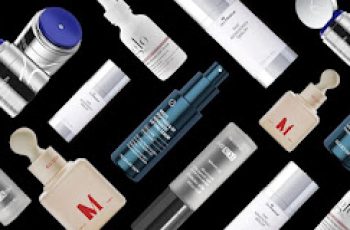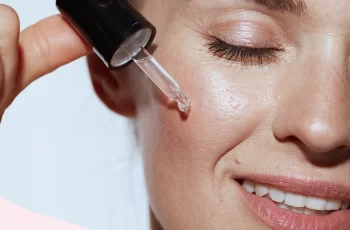
Topical Steroids: What They Are & How They Work
Topical steroids, also called topical corticosteroids, are used to treat inflammatory skin conditions like rashes, bug bites, eczema, psoriasis, and many others. While these medications can be very effective at reducing inflammation, irritation, and redness, long-term use can result in some notable side effects. The key is to understand when and how to best use topical steroid creams to get the benefits they can offer while minimizing side effects.
Steroid creams are commonly used for short-term relief from redness, itching, and swelling.
Long-term use of topical steroids can lead to side effects like skin thinning, dry skin, perioral dermatitis, and withdrawal symptoms.
Work with your doctor or dermatologist to properly use topical steroids and minimize side effects.
What Are Topical Steroids?
Topical steroids are medications applied to the skin to reduce inflammation, redness, and itching. They mimic cortisol, a hormone that your body naturally produces as part of its inflammatory response system. By mimicking cortisol’s anti-inflammatory properties, topical steroids can help to calm overactive immune responses in the skin, reducing redness, swelling, itching, and discomfort.
These medications are applied directly to the skin and work locally, rather than affecting your entire body like oral steroids would.
Topical steroids vary in potency, from mild (like 1% hydrocortisone) to very strong formulations (like clobetasol propionate) and come in a variety of different formulations, including creams, ointments, and gels.
Common Topical Steroids
There are many different topical steroids, but some of the most commonly used include:
Hydrocortisone. A mild corticosteroid often used for temporary relief of itchiness and inflammation caused by minor skin irritations like rashes and bug bites. Hydrocortisone is available over the counter and by prescription in stronger forms.
Desonide. A low-potency corticosteroid often used to treat sensitive areas like the face or groin. Desonide is commonly prescribed for mild to moderate eczema, dermatitis, or allergic reactions.
Fluocinolone acetonide. A low- to medium-strength corticosteroid used to treat conditions like eczema, psoriasis, and seborrheic dermatitis.
Betamethasone. A medium- to high-strength corticosteroid that is used to treat conditions like psoriasis, eczema, and lichen planus. Betamethasone is often used for moderate skin conditions that don’t respond to milder steroids.
Clobetasol. One of the strongest topical steroids available, clobetasol is used for more severe cases of psoriasis, lichen planus, and lupus.
What Do Topical Steroids Treat?
Topical steroids can be used to treat a wide range of inflammatory skin conditions. However, they are typically not intended as a long-term treatment for these conditions, as they can come with side effects. In the short-term, steroid creams can help to manage symptoms associated with inflammation, like redness, swelling, and itching.
Some skin conditions that topical steroids can help with include:
Eczema (atopic dermatitis)
Psoriasis
Contact dermatitis
Seborrheic dermatitis
Lichen planus
Vitiligo
How Do Topical Steroids Work?
Topical steroids work by targeting inflammation in the skin, which is the root cause of redness, swelling, and itching in many skin conditions. These medications penetrate the outer layers of skin and are able to reach the deeper layers, where they can reduce the release of pro-inflammatory substances like cytokines and prostaglandins that cause swelling and irritation.
In addition to modulating the immune system, topical steroids constrict small blood vessels in the skin, reducing blood flow to the inflamed area. This helps to decrease the redness and heat that often accompanies skin inflammation. For conditions like psoriasis, topical steroids also slow down the excessive production of skin cells, preventing the thick, scaly patches characteristic of the disease (3).
Side Effects of Topical Steroids
While effective, topical steroids can cause side effects, especially when used improperly. These include:
Skin thinning. Long-term use of steroid creams can cause the skin to thin and become more fragile because the medication interferes with collagen production and your skin’s ability to retain moisture.
Stretch marks. Prolonged use on certain areas like thighs or underarms can cause stretch marks due to reduced skin elasticity and thickness.
Perioral dermatitis. Overuse of steroid creams around the mouth can disrupt the skin barrier and cause inflammation, causing a red, bumpy rash called perioral dermatitis.
Topical steroid withdrawal (TSW). Abruptly stopping topical steroids after prolonged use can cause what’s known as topical steroid withdrawal, where redness, irritation, and other signs of inflammation can come back and may be even worse than before.
Increased susceptibility to infections. Steroids can suppress your skin’s immune defenses, making it easier for bacteria or fungi to grow.
How to Use Topical Steroids
Proper use of topical steroids is crucial to maximize their benefits while minimizing potential side effects. Always gradually taper off strong steroids rather than stopping abruptly. Your doctor will be able to help you do this properly to avoid withdrawal symptoms.
Whenever possible, avoid prolonged use of topical steroids to minimize side effects. Mild steroids like hydrocortisone can often be used for 1 to 2 weeks without negative effects, while stronger steroids like clobetasol are typically limited to short courses unless instructed otherwise by a doctor.
Apply steroid creams as directed by your doctor or 1 to 2 times daily if using an over-the-counter cream or ointment. To know how much product to apply, use the fingertip unit (FTU) rule: squeeze enough cream or ointment to cover from the tip of your index finger to the first joint. This amount is enough to cover an area about the size of two adult palms.
Finally, make sure you maintain your regular skin care regimen while using topical steroids, unless instructed otherwise by your doctor. Barrier repair moisturizers can help to maintain your skin’s barrier strength and integrity while using steroid creams.
Alternatives to Topical Steroids
If your doctor prescribed topical steroids for a specific purpose, use what you were prescribed. However, if you are looking for an alternative to steroids to help with milder signs of skin inflammation without the side effects of long-term steroid use, consider these anti-inflammatory skin care products.
Bottom Line: Are Topical Steroids Good or Bad?
Topical steroids can be very helpful when prescribed and used appropriately. They can provide quick relief for conditions like eczema and psoriasis, making life much more comfortable. However, they’re generally not meant for long-term use or as a one-size-fits-all solution.
If you are prescribed a topical steroid, always follow your doctor’s instructions to help minimize adverse effects like skin thinning or withdrawal symptoms. While these medications can help to manage symptoms, they are not cures for inflammatory skin conditions and should be used as part of a broader skin care plan custom-tailored to your skin’s specific needs.


